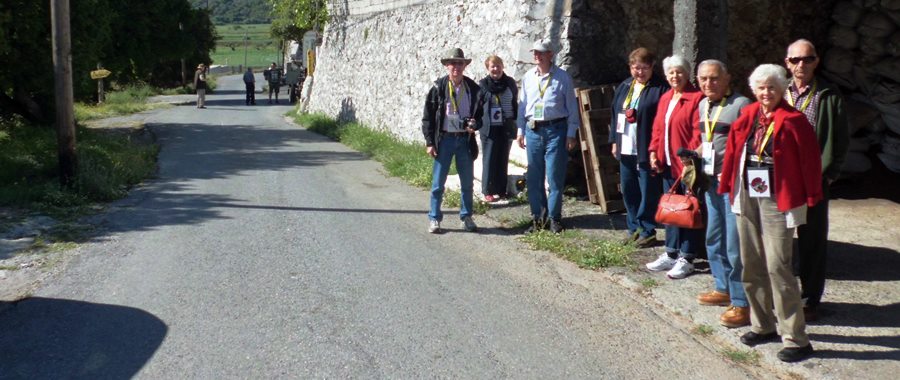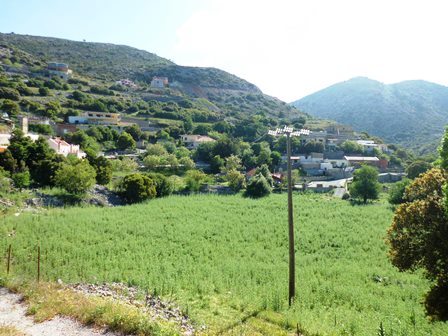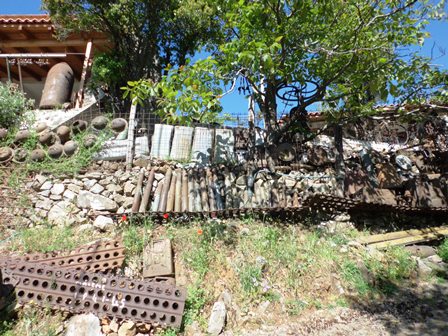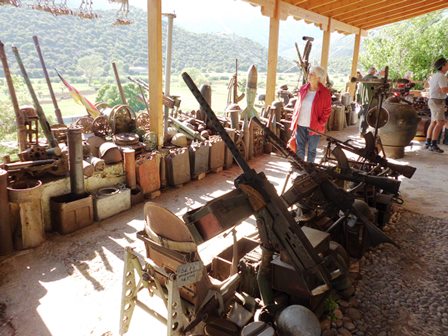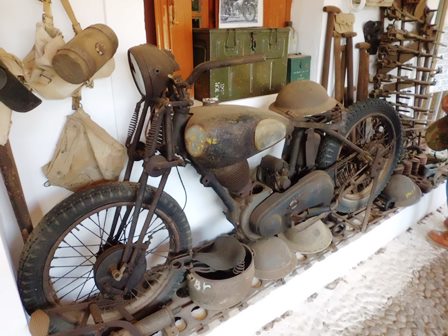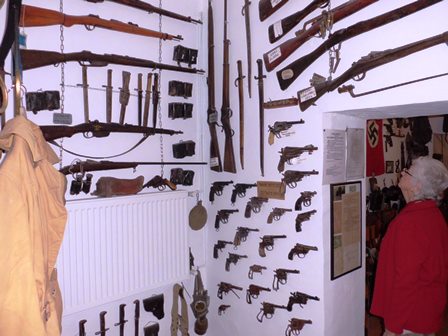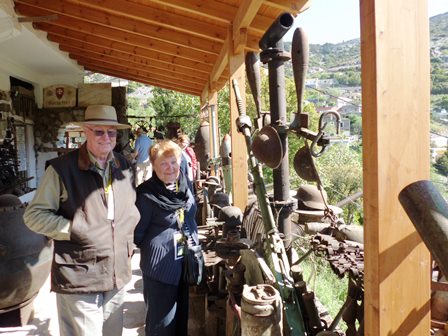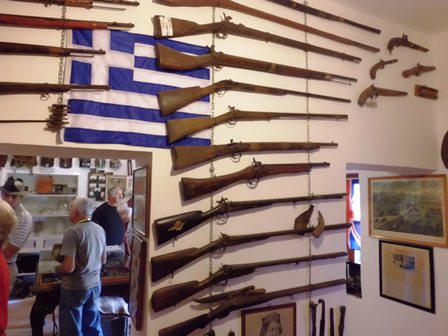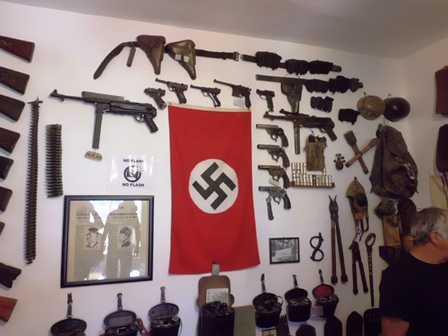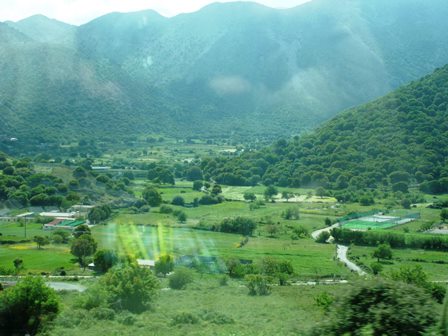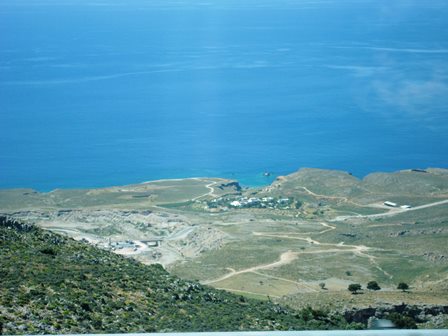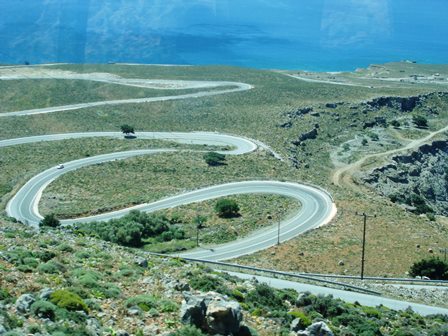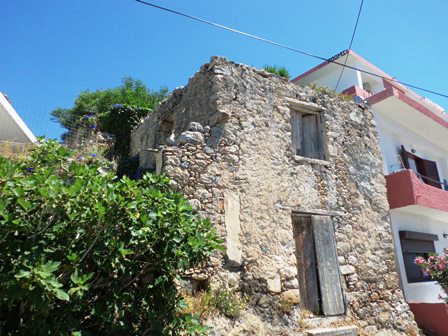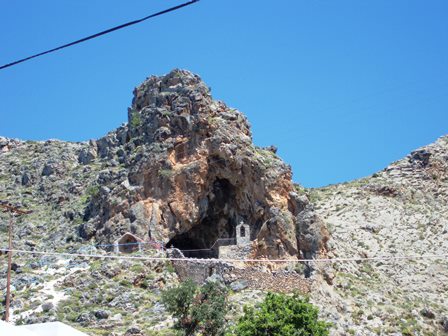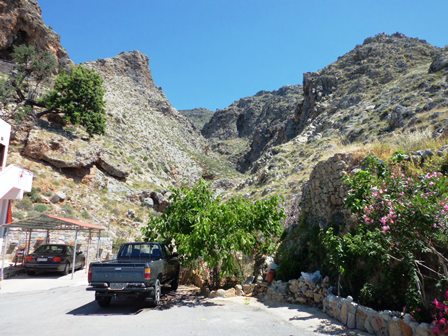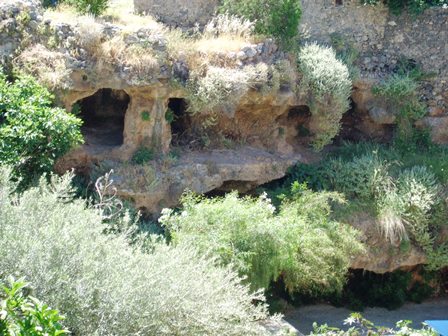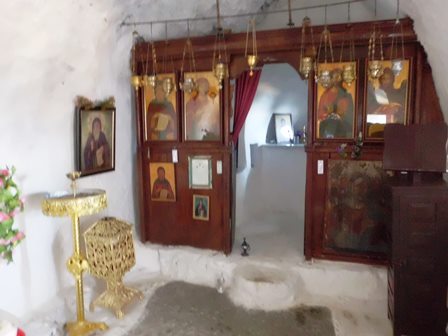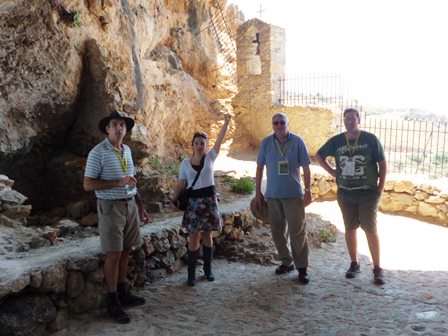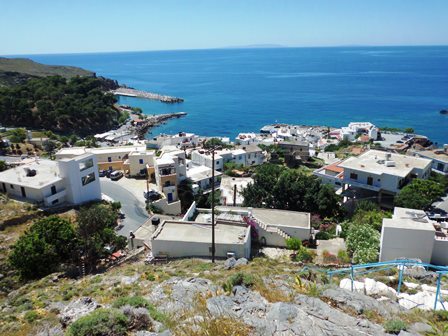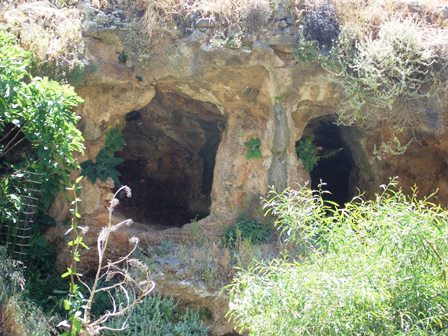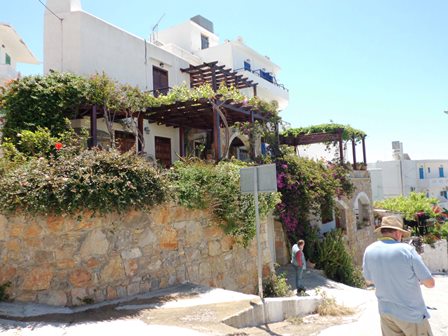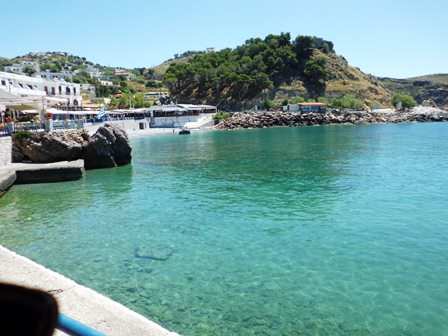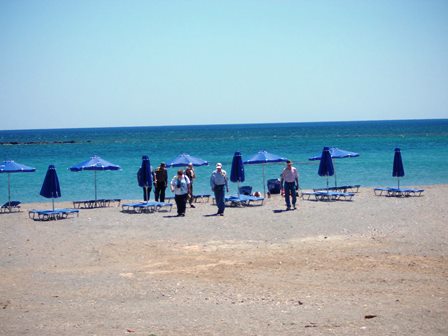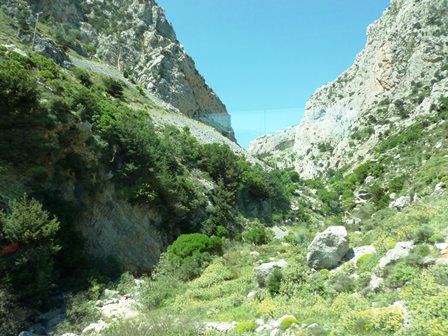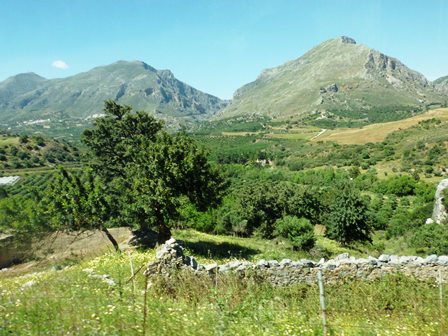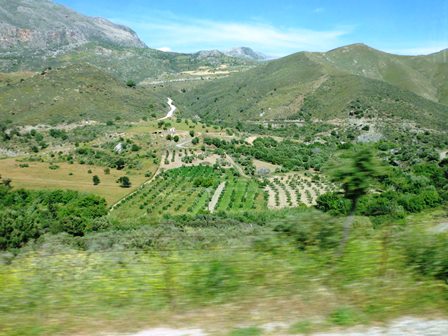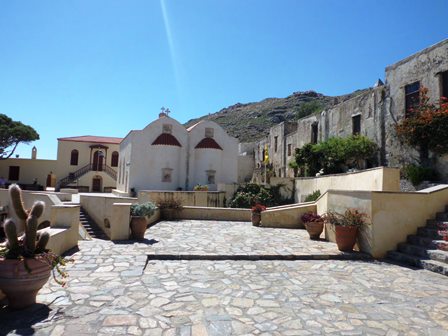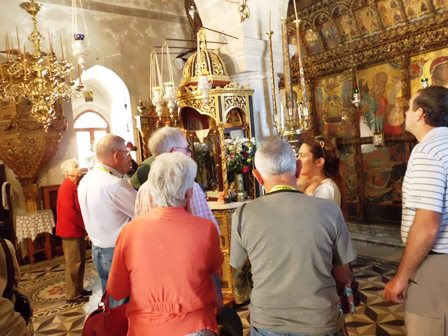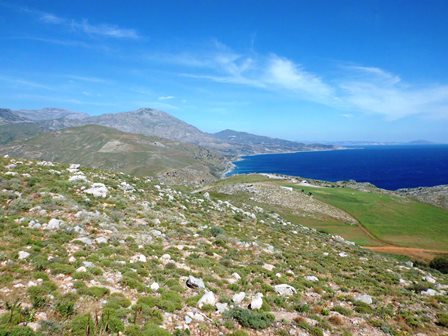This morning we followed the evacuation route of those heading to Sfakia following the loss at Maleme that meant a defeat on Crete. We drove up the mountain over the route of the withdrawal from the Chania area to the evacuation beaches at Sfakia. The country that they travel up and over was rugged indeed. We drove in an a/c coach where most of our force walked with few rations, little water and followed by the Germans.
A few shots show the terrain and the difficulties they must have had as there were no prepared food or water dumps and they were fighting rear-guard actions as they went. The more you walk the ground where this campaign was fought, the more you realise that General Freyberg and the Brigadiers from his Division were culpable in creating this nightmare for the men. Some officers certainly get promoted beyond their ability, they were brave men but not able to cope with decision making at this senior level.
We arrived on the Askifou Plain and found our way into the small village of Kare which obtained its name from the walnut trees that grow on the plain, Kare in Greek means walnut trees. The plain is 700 metres above sea level. We had parked our coach next to the village bakery and the tantalising smell of the newly baked bread drifted into the street. Our purpose for entering this village which is off the normal route, was to visit a new museum that we had heard of and were keen to assess its worth. A surprise indeed. All the artefacts and bits and pieces had been gathered by the fellow who owned it and his father before him, from the Askifou Plain.
The plain was in fact a strategic area sitting on the pass over the white Mountains to southern Crete and including the 1941 battle, there had been many since ancient times.. After our visit we stopped at a café that is located at the start of one of the major bushwalking ravines and had a local delicacy, goat cheese pancake with special mountain herbs and local honey washed down with herbal tea.
Finally arrived a Sfakia where we discussed the evacuation assembly area and marvelled how on such a small beach they could take off 6,000 in one night and 15,000 overall. Unfortunately 5,000 were left on the beach including the
2/7th Battalion.
Rod Quartermain, whose father had been captured here, was pleased to climb the hills and view the caves that his father had mentioned to him. His father had been Gazetted as receiving an MID for his work on the mainland as a Military Police Officer fighting in the rearguards and directing the traffic of the withdrawal. At Sfakia, he had been put in charge of 100 of those left behind to ensure an orderly surrender that limited the chance of men being shot. His party climbed up to the caves to hide their weapons before waiting the arrival of the Germans.
We left Sfakia and headed towards Preveli. On the way to the Preveli Monastery we had our lunch stop near a Venetian Castle built in the 13th Century by the Franks and the castle is well preserved and worth a visit.,
After lunch we moved on to the Monastery which had helped over 5,000 people during the German occupation starting with the 600 or so Australians and New Zealanders that it hid prior to them being picked up by submarines, such as the HMS Thresher, who came in over many nights for months to gather escapees who without that help would have been picked up by the Germans.
We viewed the Monastery, the church, museum and memorial and finally headed back to Rethymon.
